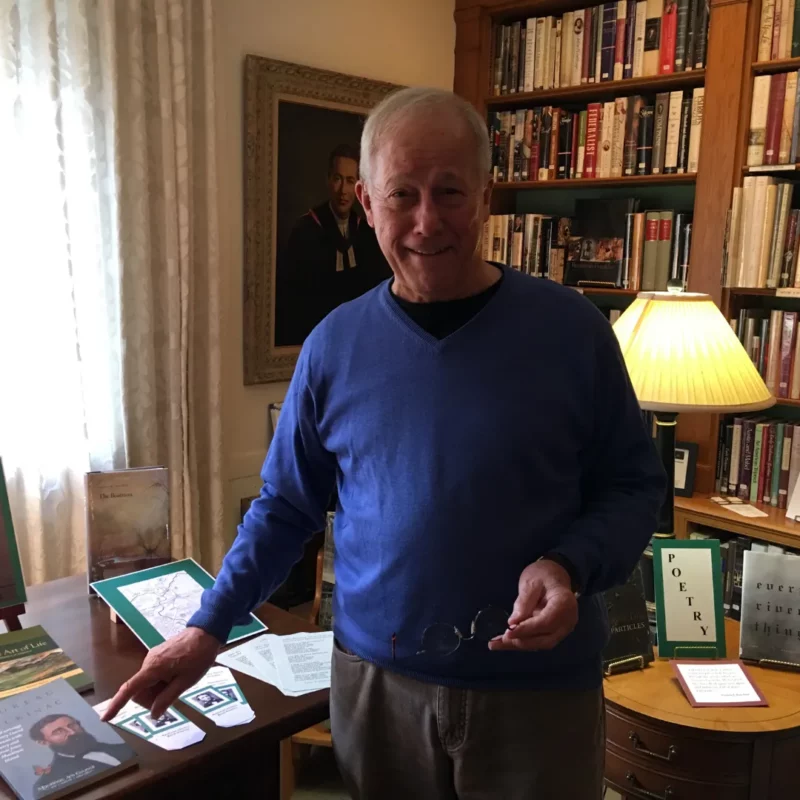If poetry is a matter of sounds, then sound must be the basic unit of form. Putting it another way, what do assonance, alliteration, rhyme, meter, rhythm — all of the tools in the toolbox used for constructing form in poetry — have in common? All of them, in their different ways, create recognizable patterns based on their repetition of sound. That is why I can think of rhyme as a species of rhythm. We are taught to think of meter as the source of rhythm in poetry, but the regular recurrence of consonants or vowel sounds (alliteration and assonance in Beowulf) or whole words (rhyme) works to the same end. Formal structure of any kind is at bottom a pattern based in sound.
It is also a gift from the poet to the listener which carries its own inherent pleasures, while serving the ends of that particular poem. And what are those inherent pleasures? Well, take rhyme. Booming every five or ten metrical feet, rhyme is another kind of punctuation (in addition to the commas and periods) in the progress of the poem, a meter below the meter, a part sung by the basso profondo. It is not unlike the system for communication by ultra-low frequency developed by the Navy for its submarines. Rhyme is, all at once, the celebration of a small goal reached, the surprise of encountering the familiar, a reunion of likenesses looked forward to. Rhyme is like friendship.
And what are the ends of a particular poem? If it’s a long narrative poem the undulating meter, like the sea surge under the ship of Odysseus, carries it forward and carries us with it. Line by line the meter reassures us that we are going somewhere, and we are getting there. If it’s a lyric poem with a rhyme scheme, the end words can be guideposts — ear posts — to help us follow the progress of the poem. If it’s a sonnet, we’ll know landfall is coming before we see it. If it’s the last section of Auden’s requiem for Yeats,
Earth, receive an honored guest:
William Yeats is laid to rest.
Let the Irish vessel lie
Emptied of its poetry.
we hear in the somber formality of the verse the drums and the caisson of a state funeral. If it’s Sylvia Plath’s “Daddy” we’ll hear one sound repeated with gathering force through 80 lines.
There’s a stake in your fat black heart
And the villagers never liked you.
They are dancing and stamping on you.
They always knew it was you.
Daddy, daddy, you bastard, I’m through.
“Daddy” is not a demonstration of elegant craftsmanship, nor is perfection as a made thing what the poem is after. Rather, the poem is a venting to rival Mount St. Helens. In its mono-rhyme, it’s a pile driver parading as a poem.
All rhyme is a regulation of sound. But rhyme is like sweets. Too much can cloy; more is not automatically better. When rhyme is overused, is mismatched to the meaning of the poem, it competes with and distracts from the poem, rather than reinforcing its flow. Rhyme then becomes an independent, disconnected activity in the poem; the effect is that of watching a child skip a rope while trying to sing an unrelated song. If rhyme in a poem calls attention to itself, it should know what it is doing. It should be a strategy of the poem that its rhyme, or the form of which rhyme is part, intends to be noticed.
Resumé
Razors pain you;
Rivers are damp;
Acids stain you;
And drugs cause cramp.
Guns aren’t lawful;
Nooses give;
Gas smells awful;
You might as well live.
Dorothy Parker
Some poems will want no rhyme, or formalism of any kind because it does not support the meaning of the poem. And that brings us back, full circle, to free verse.

